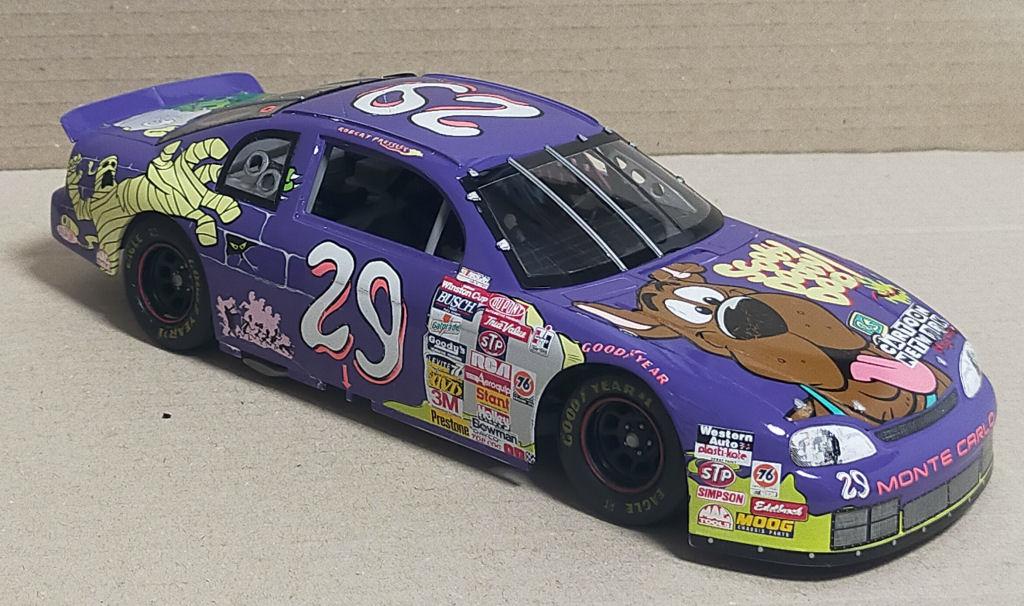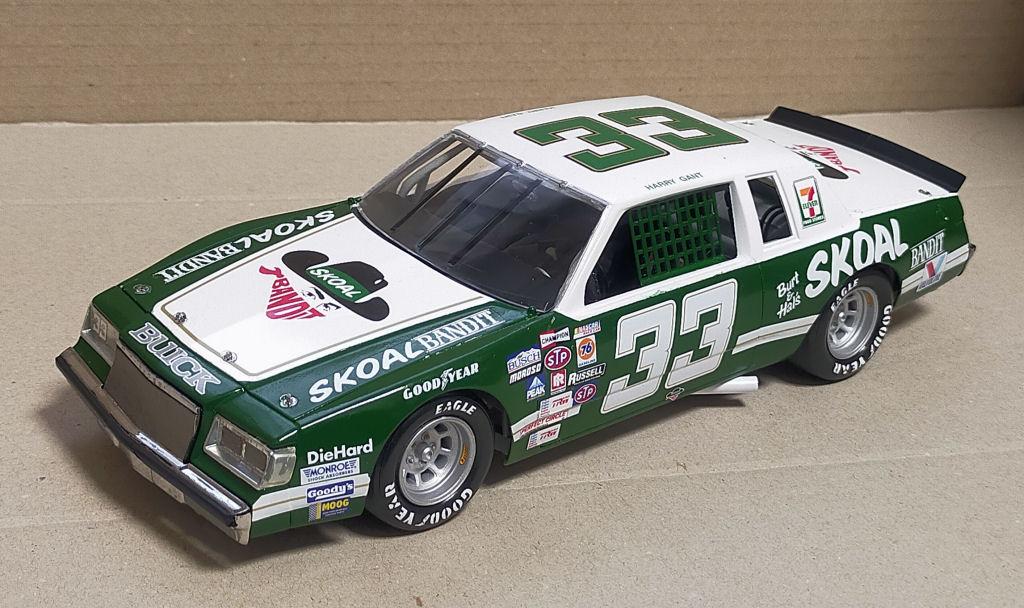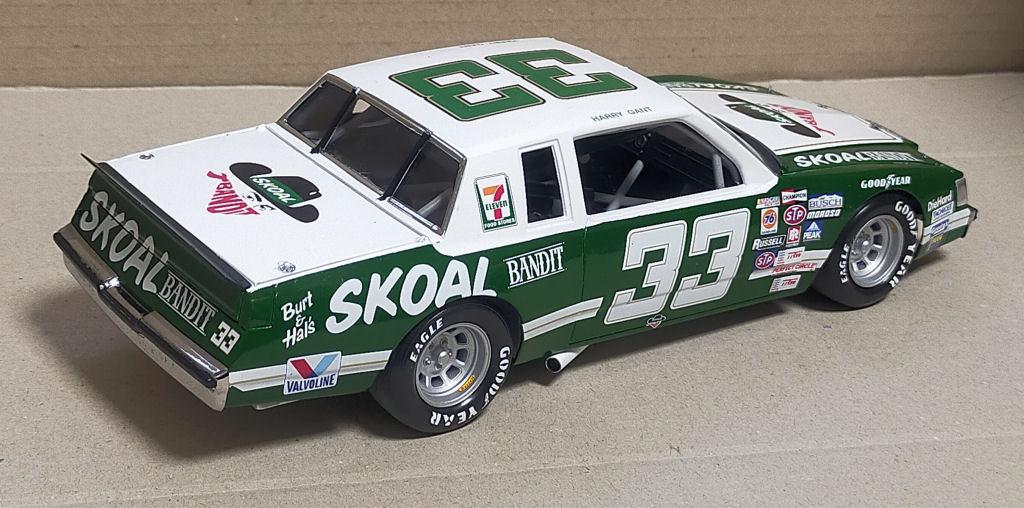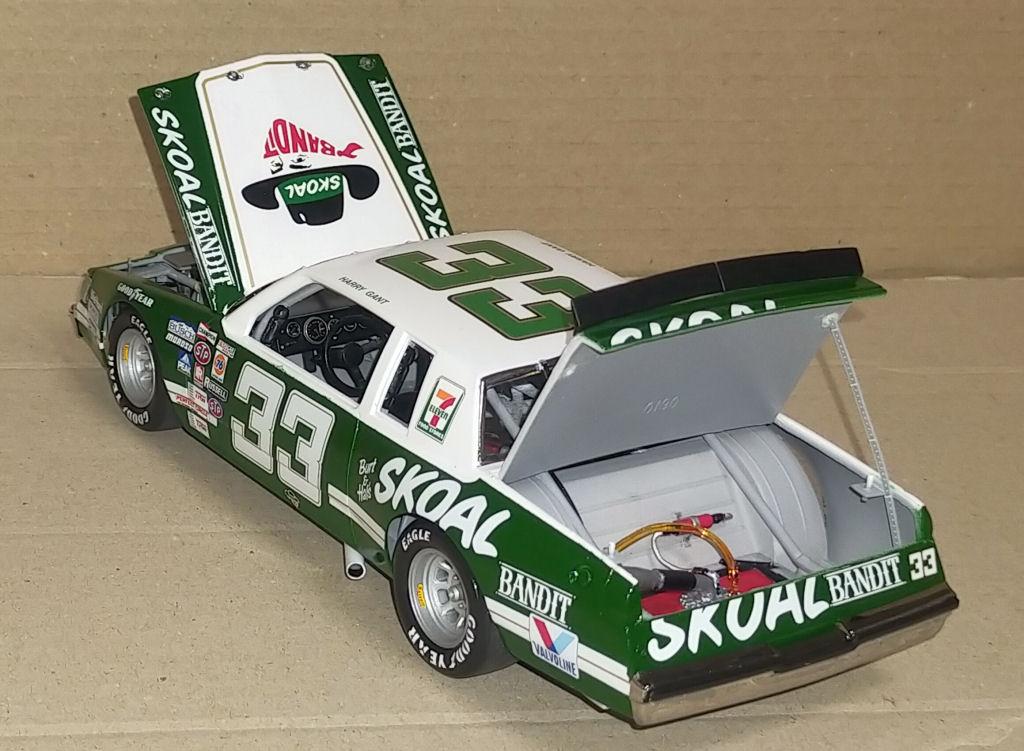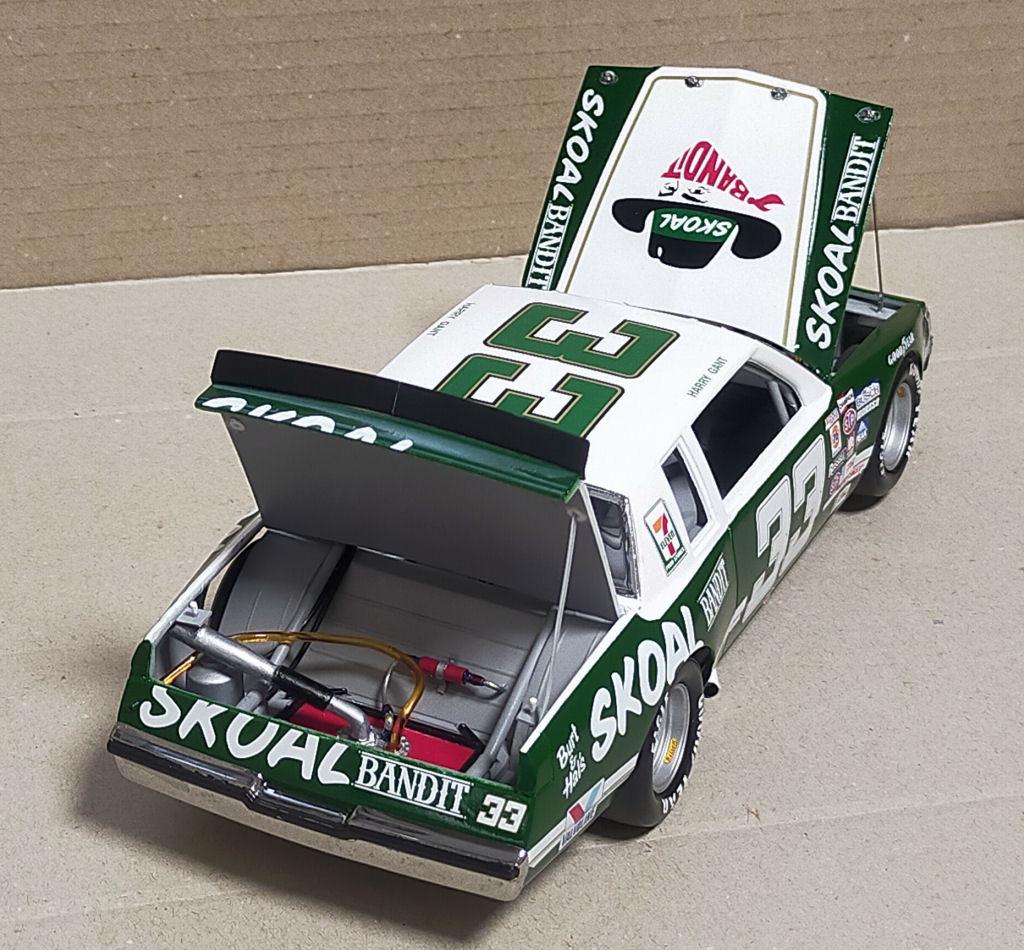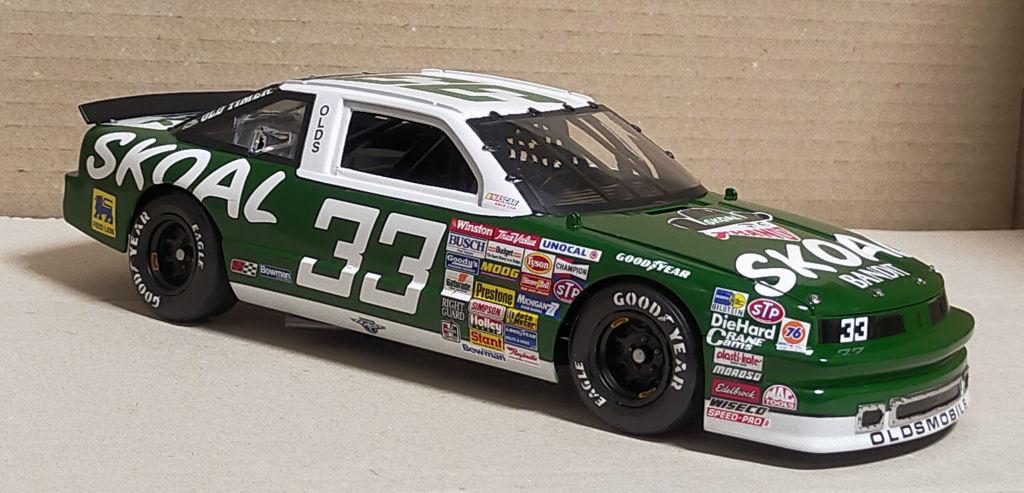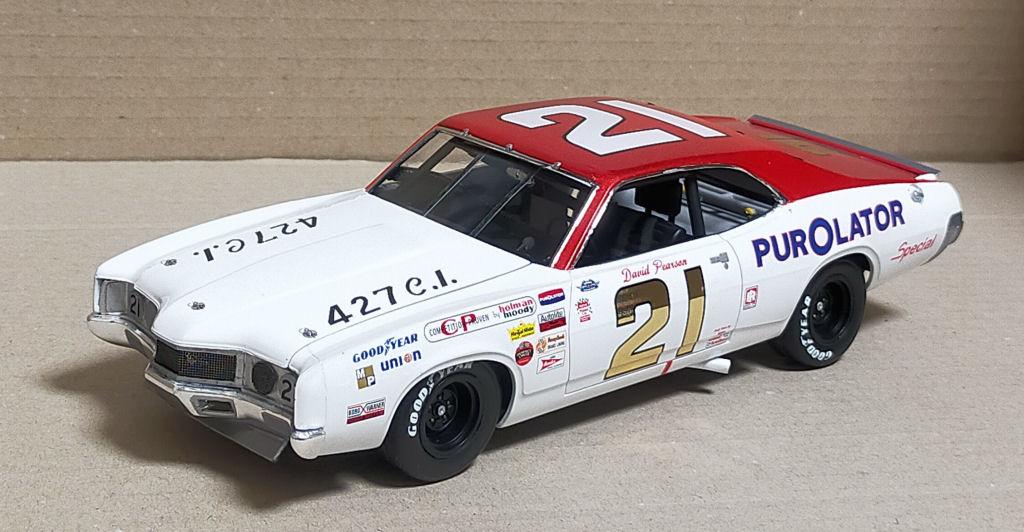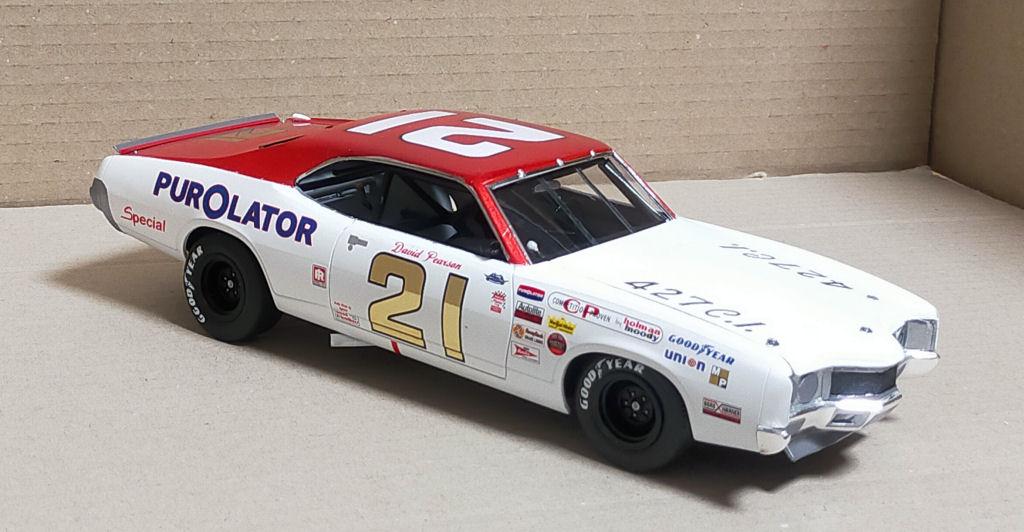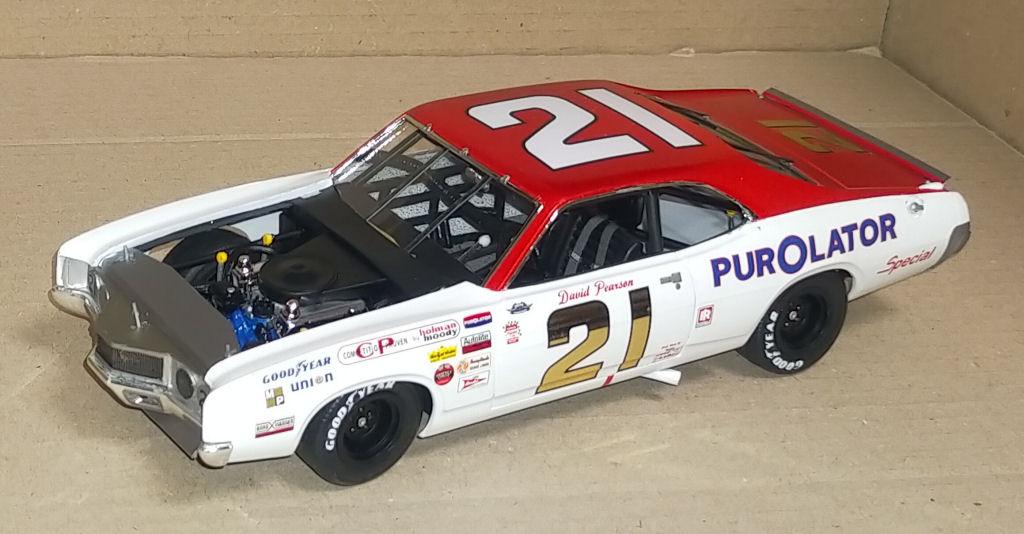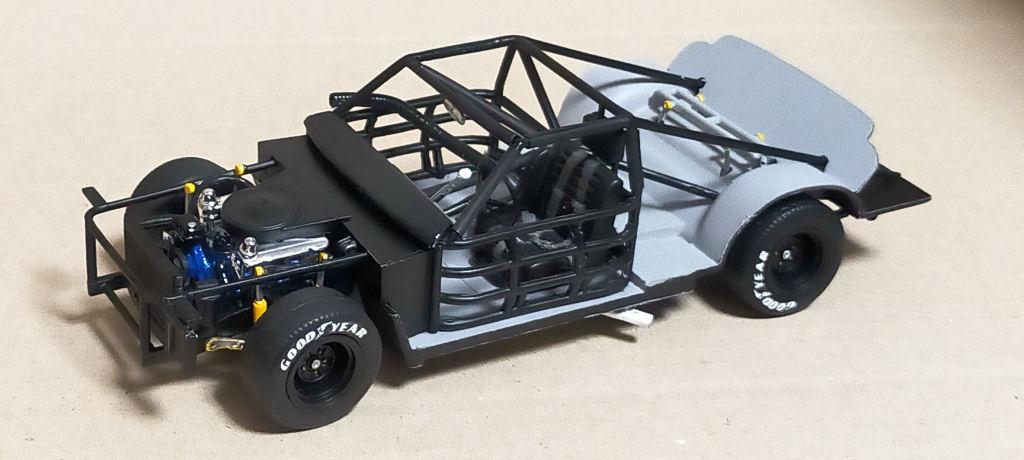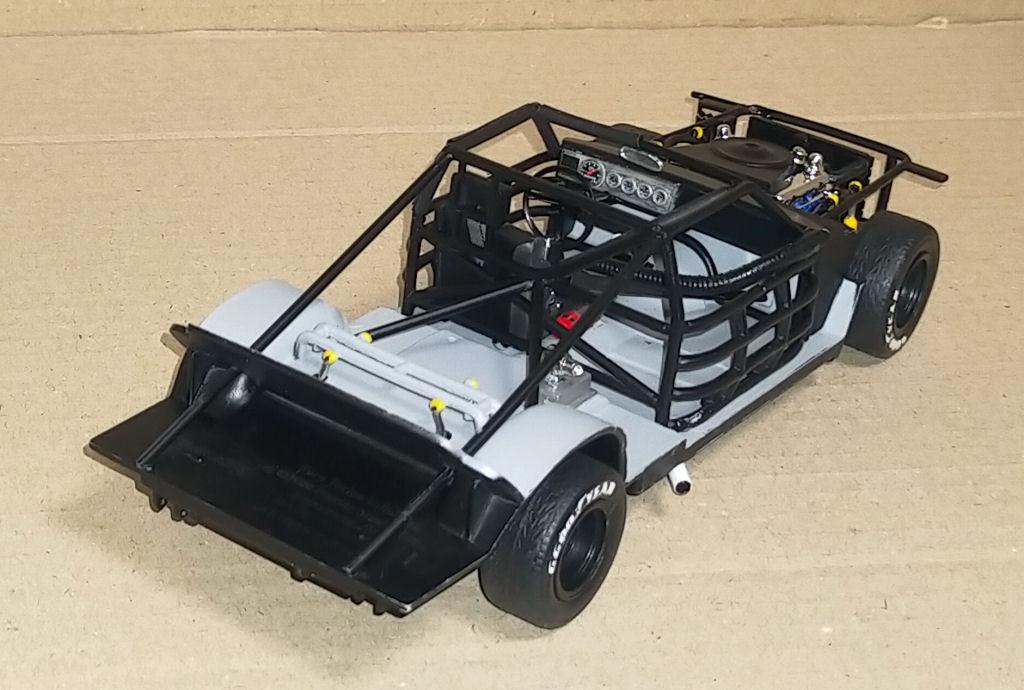
gami8630
Members-
Posts
208 -
Joined
-
Last visited
Content Type
Profiles
Forums
Events
Gallery
Everything posted by gami8630
-
I pulled this 1996 Chevrolet Monte Carlo out of the storage box and finished it up after stopping the build almost 20 years ago. The car is a bold “Cartoon Network Scooby-Doo” paint scheme and the driver is Robert Pressley. When I took it out of the storage box, the body was dirty with dust, but after a coat of wax to remove the dust, a polish with compound, and another spray of clear, it cleaned up amazingly well. At the time I interrupted the build, the window parts had not yet been installed, but I was able to find the parts in the storage box and the body was now safely completed. The chassis covered by the unfinished body was not so dirty, but the Goodyear logo on the tires was faded. Several versions of the Monte Carlo kit were released between 1985 and 2007 as the body style of the actual car changed, and this completed kit is the second generation. The body color is Tamiya color spray TS-24 Purple and the decals are SLIXX #1195/9629.
-
This time I built the 1983 Buick Regal, sponsored by Skoal Bandit and driven by "Handsome Harry" - Harry Gant. The base kit is the “1981 Buick Regal Charlotte Winner” by Salvinos JR Models, but the original kit was released by Monogram in 1983 as the first 1/24 scale NASCAR kit. As usual, decals were ordered from “Mike's Decals”. I purchased “#33 Skoal Harry Gant 1982-83 Buick” from Powerslide. This time, I added more details than usual. 1. Body: I added detail up of the fuel tank and oil tank, and piping so that the trunk lid can be opened and closed. 2. Chassis: The chassis is based on the chassis of the kit, and is detailed up by combining parts of the chassis released from 1990, which were stored as junk parts. 2-1. Detail up the roll cage by diverting the bars with protective pads wrapped around the junk chassis. 2-2. Reproduce the roll cage in the part hidden by the dashboard and not visible. 2-3. Add the mounting stay for the oil cooler on the left side of the radiator and add and extend the front hoop 3. Engine: Changed the Chevrolet engine and exhaust pipe to parts from 1990 and later kits, and replaced the second half of the exhaust pipe with a 3.5mm diameter plastic pipe. Also, plug cords, oil lines, and fail lines were added. 4. Cockpit: Replaced the dashboard instrument panel with parts from the 1990 and later kits, and painted the needles and numerals of each meter with a faceted brush, then poured clear enamel to represent the lenses. The steering wheel was also replaced with parts from a 1990 later kit. 5. Fuel tank and oil tank: Fuel tank has been replaced with parts from 1990 and later kits, and a fuel pump and piping made by myself from plastic rods have been added. Also, added fuel hose and vent hose from AMT NASCAR kit, added In/Out piping to the oil tank, and extended the piping to the engine compartment via the lower part of the roll cage. 6. Tires and wheels: Tires and wheels were replaced with parts from 1990 and later kits, tread surfaces were polished, various logo decals for Powerslide tires and wheels were applied, and semi-gloss topcoat was sprayed. 7. Painting and marking: The body was sprayed with Tamiya Super Surfacer (gray) and Fine Surfacer (white), then sprayed with TS-26 Pure White and TS-43 Racing Green, and overcoated with TS-13 Clear before applying decals. In addition, the following image shows the car side by side with the previously built Oldsmobile Cutlass, which has attractive two-tone colors of green and white, the sponsor's colors. Also, the NASCAR race cars of these days have the power of a NASCAR race car of the good old days, with the sponsor's stickers placed in many places on the front fenders.
-
Kyle Petty Mello Yello AMT Kit.
gami8630 replied to Benfd54's topic in Stock Cars (NASCAR, Super Stock, Late Model, etc.)
Very nice build. When I built AMT's Thunderbird in the past, I was not happy with the body style, but the body style of this Grand Prix is very nice. -
Thanks, Bainford, Rattlecan Dan, Chris in Berwyn, Jim Dodson. There are various rough work in the details, but the painting and decals were done fairly well. In addition, a hinge has been added to the engine hood so that the engine hood can be opened and closed just like the real car. I tried to attach the “DETAIL MASTER” photo etch hood hinge on the back side of the hood, but I could not fix it firmly.
-
This car is the 1991 SKOAL BANDIT Oldsmobile. The driver is the very famous Harry Gant. Harry Gant earned the nickname “Mr. September” after winning four consecutive races in Darlington, Richmond, Dover, and Martinsville in September 1991. The base kit is Monogram “#75 DINNER BELL OLDS” and the decals are Powerslide “#33 Skoal Harry Gant Olds. This time, I basically assembled the kit as is. The only modifications were replacing the exhaust pipe with a round tube, angling the rear spoiler, and adding an overflow pipe. The body color was sprayed with Tamiya TS-26 Pure White and then TS-43 Racing Green.
-
Harrison Burton won the 25th NASCAR round of the Coke Zero Sugar 400, giving Wood Brothers Racing its 100th win. To celebrate Wood Brothers Racing's 100th win, I build a 1973 Mercury Cyclone. The driver is David Pearson. Body is MPC's ‘Donnie Allison's Mercury Stock Car’, built on a Polar Lights ‘Mercury Cyclone’ chassis. The body was modified by repositioning the fuel inlet, fitting a plain rear panel, adding an overflow pipe, adding split lines to the front and rear panels and refurbishing the front grille. The rear spoiler is made from 0.5 mm thick plastic sheet. For the cockpit, the instrument panel has been modified, and the steering wheel and fire extinguisher from the Monogram kit have been converted. The engine is a 427 Tunnel Port. The body was sprayed with Tamiya's Super Surfacer (Gray), Fine Surfacer (White), and TS-26 Pure White. The roof is TS-18 Metallic Red. The last image shows the Wood Brothers machine I have built so far. I like the combination of the white and red body color and the gold shining “21”.
- 21 replies
-
- 10
-




